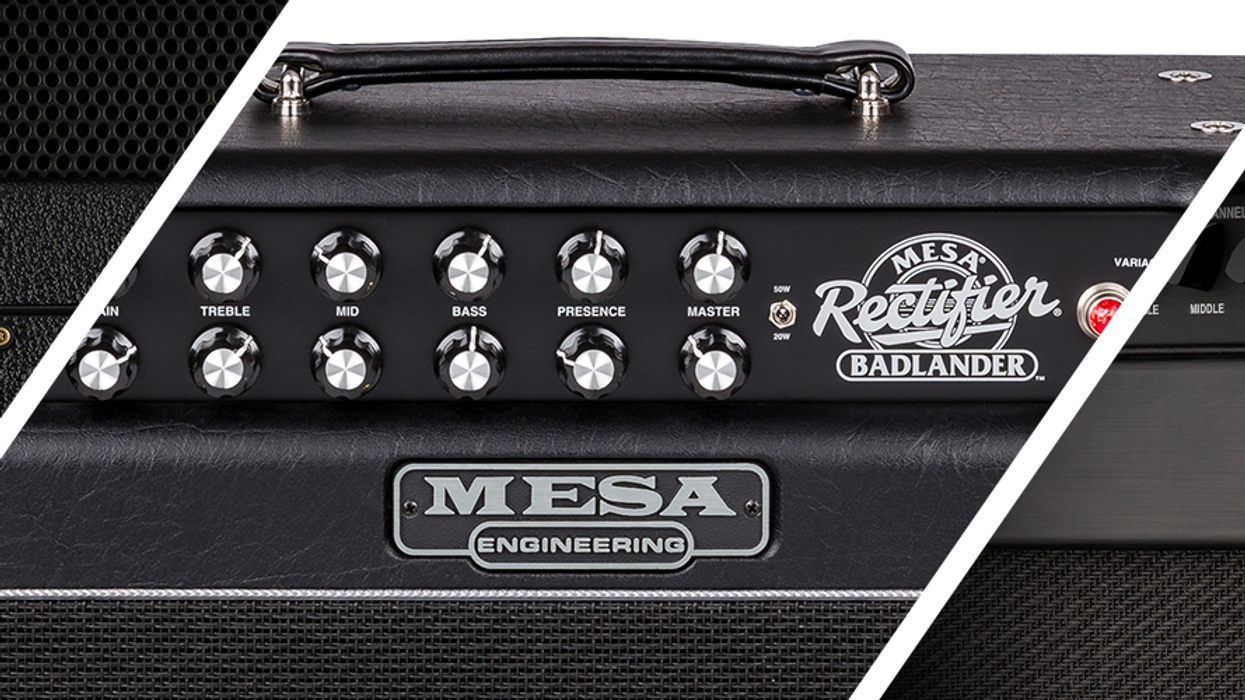RatingsPros:Lively crunch colors. Simple to use. Lots of range. Not too compressed. Good price. Cons: Doesn’t do freakshow fuzz. Street: $169 Blackbird Savoy carolineguitar.com | Tones: Ease of Use: Build/Design: Value: |
What if, instead of working here, I reviewed pizzas for a pizza magazine? It might not be all that different. For example, if I received a Hawaiian pizza for review, I couldn’t just write, “Pineapple? Yuck!” I’d need to consider how the pizza might be regarded by consumers whose tastes differ from mine: “Although pizza purists might quibble about the use of tropical fruit and new-world deli meat, those of a more adventurous bent may be inspired by this cheeky variation on a vintage classic.” Hell, save for a couple of words, I’ve probably written or edited a version of that sentence 500 times.
Not an Acquired Taste
Ironically, the Hawaiian Pizza pedal from Electronic Audio Experiments John Snyder and Philippe Herndon (a PG columnist) requires no such disclaimer. Unlike its namesake dish, this isn’t a love-it-or-hate-it item. It’s just a great-sounding fuzz/distortion with surprising range and dynamic sensitivity, given its simple format.
The circuit descends from the dual-transistor fuzz pedals of the 1960s, such as the Fuzz Face and Fuzzrite. These aren’t germanium transistors, mind you, but a pair of high-gain silicon 2N5088s. There are no op amps or clipping diodes. A modest set of through-hole components is arranged on an uncrowded circuit board, along with amusing comments and pictures etched into the plastic. (I won’t spoil the jokes, but if you’ve read Philippe’s columns, you know he’s a deeply funny dude.)
You power this pizza with a standard 9V adapter or a battery. (A single battery will last a long time in this low-draw circuit, and it’ll keep sounding cool as the battery weakens.) A modern ribbon connector links the footswitch to the board. The plastic audio and adapter jacks are mounted on the standard BB-sized enclosure, not the board.
Stay Stoopid
At first glance, the Hawaiian Pizza’s three controls (represented by pig, pineapple, and pizza icons) seem rather simple, but don’t be fooled. They’re extremely simple. Pig is merely an input trim control, yielding an effect identical to lowering your guitar’s volume knob. If you’re accustomed to controlling gain from your guitar, you may never use it. Pizza is a passive output control. So, pineapple must be a gain control, right?
Nope. It’s a voltage-cut knob. At lower voltages, notes spatter and fizz. Hawaiian Pizza has no tone controls or dedicated gain controls. This is super simple stuff. As Caroline says on the instruction card, “Be sure to take your thinking caps off for this one.”
Idiot Savant
Despite its simplicity, this pedal coughs up many colors. Check out the demo clip. I recorded everything with a DIY dual-humbucker guitar and a small combo amp whose knobs-at-noon settings never change. The clip begins with the bypassed sound, cleanish but edging toward breakup. After that, all variation comes from switching pickups and working the Pizza’s pots.
The pot ranges are beautifully tailored, and there are no bad settings. The output and voltage controls don’t descend to zero, and there’s much cool stuff in their lower reaches. Attenuating the input level via the pig knob means less distortion, obviously, but also less bass. It’s sort of a combined gain/clarity control. The lowest voltage settings sputter and fizz, yet these tones are entirely usable. Meanwhile, those 2N5088 transistors are loud suckers, so there’s ample level to abuse your amp. With a responsive amp, you get a lot of tonal variation just by tweaking the pedal’s output.
The circuit responds dramatically to level changes. Its tones never truly clean up like a Fuzz Face can when you lower guitar input. Still, even modest adjustments can produce dramatic variations. Meanwhile, tones remain relatively uncompressed. Note attack is crisp and aggressive, even at the hottest settings.
The Verdict
“Simple” is the opposite of a criticism here. As many pedal designers can tell you, sometimes the humblest circuits yield the grandest tones. Hawaiian Pizza doesn’t deliver anything terribly startling: just a fine assortment of fat fuzz tones with excellent dynamics and no useless settings These ultra-present, high-impact tones are likely to slice through any mix. Get it? Slice? Oh, never mind.









![Rig Rundown: Russian Circles’ Mike Sullivan [2025]](https://www.premierguitar.com/media-library/youtube.jpg?id=62303631&width=1245&height=700&quality=70&coordinates=0%2C0%2C0%2C0)

















